Curator Interviews
A Passion For Photography
Chief Curator of Photography at MoMA, Peter Galassi, sits in the midst of a small office in a warren of offices. The building may be brand new, but the piles of papers, books and catalogues speak to his long history with the museum as well as his passion for photography. His extensive writing on the subject decorates every surface. Moving a book or two and sipping from a cup of coffee already made cold by the distractions of his work, he makes time for this interview.
Published
2 years agoon

Your interest in photography goes back to the sixties and early ‘70’s when few people took photography seriously as an art medium. What sparked that interest?
Like most people my generation or older, I got interested as a teenager in taking pictures. There was no apparatus for the study of photography as part of our history. I’ve never taken a course in the history of photography, I would have loved to but there weren’t any in my school. There was a school darkroom. I learned the media there.
As a curatorial intern in the photography department at MoMA in 1974, you began your career working with one of the most influential photography authorities in history: John Szarkowski. What effect did his vision have on your approach to photography as an art medium?
I object to the term “formalist.” If you are interested in snapshots and news photography you are not just interested in how one shape fits next to another, if that’s what you mean by “formalist.” John Szarkowski was the first really first class mind to devote his life to being an historian, critic and curator of photography. Not his entire life, he has another career as a photographer, but 29 years is a big chunk of his life. He’s still the most provocative, useful person who has done that. As I said, I never studied the history of photography in the classroom: working for him everyday I didn’t need to!
Did you find any differences in the way you viewed photography with Szarkowski’s vision?
It was a very different world when I began as an intern in 1974. I’m very grateful for that time when the only people involved were people who really understood photography. There were five people in the department, including the intern and the secretary. Most interns did curate exhibits. I did a little show then that opened in the fall of 1975, called “Picture Puzzles” where the theme was straight photographs of arranged objects by Man Ray, Frederick Sommer, John Locklern and Robert Cummings. It was an exploration of an alternative tradition. It was conceived as a show, that by reputation, John wouldn’t have done. He was a big part of my education and I value him enormously but one doesn’t learn only from one person. I don’t think of photography as separate from everything else. I’m a conventionally trained art historian. I wasn’t just interested in photography, even as a teenager.
You returned to the museum in 1981 as an associate curator while earning your PHD at Columbia in art history and succeeded him as chief curator in 1991. As chief curator, what would you describe as the seminal exhibit for you that began your tenure and brought your vision to the walls at MoMA?
Each exhibit is an experiment that seems useful to do at the time. When John Szarkowski came to MoMA his first exhibition was “5 Unrelated Photographers” which was a deliberate effort to challenge the Steichen era. Steichen was a great man. He was one of the great photographers of the 20th century but as a curator he was wrapped up in the idea of photography as mass communication, which really didn’t have a place in a museum. When John came here, in addition to his formidable talents as a curator, he also returned the photography department to the conventional museum functions as a curatorial department that began under Beaumont & Nancy Newhall. That was a big change: a bigger than normal change from one curator to another. Nevertheless, I did an exhibition that was planned while John was still chief and he helped me a lot. “The Pleasures and Terrors of Domestic Comfort” opened in the fall of 1991. The show was based on the recognition of the theme: bourgeois life as seen from the inside, a common aspect in a broad range of contemporary work, especially in this country. The show turned out to be only American photographs. It was also an attempt to deal with photography’s documentary traditions with some of the new roles of photography in the art world. On one end it had Nicolas Nixon and on the other end it had Cindy Sherman. As chief curator the first show I did was from the permanent collection of work made since 1980. It was called “More than One Photography.” This was my “Five Unrelated Photographers.”
For photography critics, curators and historians of my generation, the biggest single challenge is to try to deal with the fact that there are still two photographic worlds: Old photographic traditions and the newer traditions that result from the uses of photography developed in the art world.
PETER GALASSI
What is the greatest challenge you face as a curator?
For photography critics, curators and historians of my generation, the biggest single challenge is to try to deal with the fact that there are still two photographic worlds: old photographic traditions and the newer traditions that result from the uses of photography developed in the art world. Even though there is more exchange and overlap between those two worlds than there was twenty-five years ago, there are still two different worlds. As part of my job, I need to be responsive to both of them and to encourage them to be aware of each other.
You have had the opportunity to work with so many living artists. How would you describe that experience?
It’s great! MoMA’s mission includes contemporary art, not just contemporary art. The hypothesis is that the oldest things here are related to the newest things here. It’s an honor and a pleasure to work with the people who actually make these things.
Can you tell us of some of the memorable artists you’ve met?
Henri Cartier-Bresson is the most intelligent person I’ve ever met. He was intelligent in every aspect of life. My definition of an intellectual is not somebody who has read a lot of books, but is somebody that in the areas that matter to them, refuses to accept received wisdom. In my opinion, all good artists are intellectuals in that sense: in matters they care about they think through themselves. That’s extremely refreshing.
The summer ’05 Lee Friedlander exhibit was one of the largest solo exhibits of a living photographer. Friedlander also made his debut at MoMA in a large group exhibit “The Photographer’s Eye” in 1964 and again in 1967 in Szarkowski’s “New Documents” exhibit. In organizing this exhibit what most intrigued you?
Lee Friedlander is a rare case of someone who is extremely talented and has managed to keep an original artistic vision alive and growing. That’s very impressive! I felt very lucky to work on that exhibit. It is so rich! I was just in Munich a couple of weeks ago installing the show there and it was like a whole new adventure! The challenge to a curator is to be alert across the board. Of course, no curator can entirely achieve that but the three photographers that Szarkowski elected as the major young talents in the sixties: Arbus, Winogrand, Friedlander. Now you could add other people, but it would be hard to object to those three! A lot of people never actually looked very hard at Winogrand, Friedlander and Arbus. Arbus is a little different because of the sensationalism connected to her images, but I would say that the art world in general still doesn’t have a clue as to who Garry Winogrand is and Lee is just beginning to be recognized as a towering figure in the art world. This is one of the great artistic figures of the second half of the 20th century! The most radical of those three was Winogrand and as a result, he’s still the one who is the least appreciated. He became so sophisticated photographing in the open street that it would be really hard for someone to compete with him. The only other photographer who can is Phillip Lorca Di Corcia and he’s just done that.
You have observed photography’s incredible technological shifts from the standard black and white silver print to color to digital. All of these media changes have certainly affected the format of the photographic image, but do you believe it has also affected the content?
This is another way of recasting the formalist idea. There are several formalist ideas but the useful one is that you can’t separate form and content: a change in form is a change in content. The language creates these different words so that we can talk around something that is indivisible. So I believe that you can’t have the same content in a different form. If the picture looks different, what it means is something different.
Scale is one of the overriding issues with photography today. Do you think that scale is one of the factors that has contributed to the photograph’s place in galleries that formerly were devoted to painting?
That’s a very complicated question. The simplest answer is market conditions. There is an existing market for things that you hang on your wall that are big and colorful enough to get some attention. So it’s quite natural for artists who want to compete in that arena to make large images. Scale, of course is also an artistic opportunity. Jeff Wall, with whom I am working with on a show, responds to a certain kind of painting in his work. For him, the key thing is to make a picture that deals with the scale of the viewer’s body as found in the great post Renaissance painting tradition. For Wall, Gursky, and others working in this manner, their work would be reduced in quality if reduced in scale. Many mid-twentieth century photographers, by tradition, chose to make images 11”x14” or smaller, although it was possible to make larger pictures. Richard Avedon was unique in that way. The first large images he made were those multi-frame pictures like the Andy Warhol Factory or Mission Command where, in consequence, the figures were life-size. But remember that our judgments of artistic quality don’t just follow size. Conventional old fashioned photography was not very impressive on the wall but it looks great in books! If you have a good copy of Robert Frank’s The Americans, you own a great work of art.
Moving MoMA to Queens and back again created a major shift in audience and focus for the museum. In Queens, the space was dramatically different from the new Manhattan building. How do you think that affects the way you curate? Does the space itself, dictate a sense of scale?
One of the things I learned, and I learned this partly with the Friedlander show, working in the big sixth floor gallery, is that it really doesn’t matter. What I noticed is that if you have an eight-by-ten inch image on the wall you’re really only going to be away from it by about three or four feet. The principle of Friedlander’s show, and this came out of his work, is to show everything in groups. That’s how he worked. The result is that the work had the scale of much bigger works of art.
Do you feel that museums are changing their approach to exhibitions in order to appeal to the larger public interest?
In this museum the curatorial staff tries to figure out what art needs to get shown and then show what is most original, what is the best, what is most interesting. Ultimately, it’s for the public, but the public is made up of individuals, each brings their own interpretation to the art. It is up to us to clarify and provide the opportunity to the public to encounter the real thing.
Do you see any hesitation on the part of museums or collectors in acquiring or exhibiting digital imagery?
It’s the artist’s job to make the things, and it’s the museum’s job to care for them. Twentieth century art, in conservation terms is the biggest nightmare of any art period. What has emerged is a much more active relationship between the artist and the conservators. We work with artists in a number of ways to understand how they’ve made things but also to suggest ways of making things last longer. We have a very expensive freezer system for color photographs from the seventies into the eighties when color was extremely fugitive. Now the digital print, if it’s done properly, can last a very long time but the original digital file- that’s another matter! The digital file, however, is not the work of art, the interpreted print is.
What exhibit plans do you have for the future at MoMA?
The gallery’s been open for a year and we’re still moving back into the museum. There’s a lot of behind- the-scenes settling in. We’ve returned to our Fall New Photography series. We’ve got a wonderful sponsor, JGS who has committed to sponsoring the first three years of that series. We’re planning to change the whole permanent collection display twice a year. The big new contemporary art galleries on the second floor will rotate about once a year. They’re not just painting and sculpture galleries anymore, they include everything.
Where do you see photography ten years from now? Any visions?
Artists lead and museums follow.
The Museum of Modern Art in New York City is located at 11 W 53 St. in Manhattan. 212.708.9400 www.moma.org. Peter Galassi was the Chief Curator of Photography at the MoMA from 1986 – 2011. Quentin Bajac was appointed The Joel and Anne Ehrenkranz Chief Curator of Photography at The Museum of Modern Art in January 2013. Since joining the Museum, Mr. Bajac has co-organized the exhibition Scenes for a New Heritage: Contemporary Art from the Collection (2015), and organized A World of Its Own: Photographic Practices in the Studio (2014) and Modern Photographs from the Thomas Walther Collection, 1909–1949 (2014) (with Curator Sarah Meister).
You may like
-
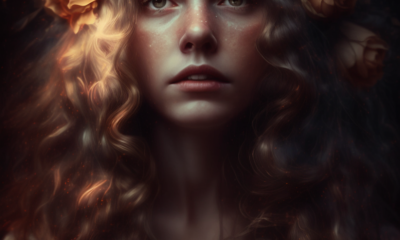

The Intersection of Technology and Fine Art:
-
-


Painted Smiles and Hidden Tears: A Photographer’s Journey into the World of Circus Clowns
-
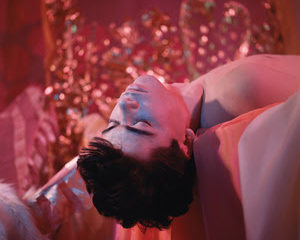

THE PHOTOGRAPHY SHOW PRESENTED BY AIPAD: EXHIBITION HIGHLIGHTS
-
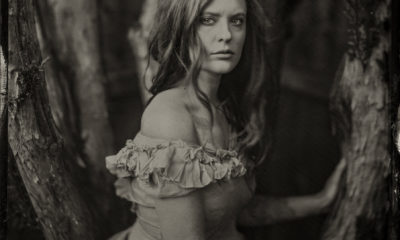

Preserving the Past, Capturing the Present: The Journey of Three Traveling Tintype Photographers
-
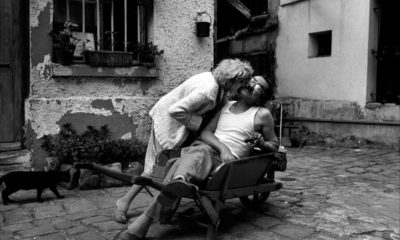

Fine Art Photography and the Human Condition: A Study of the Emotional and Psychological Themes in Contemporary Photography

The Corcoran Gallery of Art occupies an unusual place in the federally funded landscape of Washington DC museums and galleries. Surviving as it does: a long-established private institution bobbing up and down through waves of controversy, applause and economic crisis, it is a school and a museum and probably closer to the heart of the Washington-area art scene than it’s heavily endowed neighbors. Now under new leadership, it is poised for change. Paul Roth, the Corcoran Gallery of Art’s Curator of Photography and Media Arts, is ready for the challenge: his areas of expertise are postwar American photography and the history of film. Politics and art fascinate him. Looking at images: anxiety and discomfort provoke him. The Corcoran, with its privately funded flexibility in this government town seems like the ideal place for this curator.

Your background is a degree in Art History at the University of Arizona in Tucson. Was curating art always a goal?
I first wanted to be a photographer. I was lucky enough to grow up in Tucson, where one of the best high school programs for photography is located at Tucson High School, and I trained there and thought I would become a photojournalist. When I was 18 I looked for work at the Center for Creative Photography at the University of Arizona, a place I had visited since I was 14, and I was hired to catalog the Edward Weston Project Print Collection. This was an amazing leap on their part, to hire a teenager to do something like that, and it changed my life. I decided to become a curator while working there during the next five years. I’m not sure what lead directly to that decision; I was there because I loved the medium and liked being around pictures. It consumed me. I was able to do many things and had access to their great collections of photography and archival materials, and in time it just seemed obvious that my career would be in curating.
You’ve been with the Corcoran Gallery of Art for over 11 years. Were you a photography intern at another museum prior to that? When did your fascination with postwar American photography grow into a passion?
I’ve worked at three museums. From the Center for Creative Photography I went to the National Gallery of Art in Washington, where I worked for Sarah Greenough as the archivist for the Robert Frank Collection and served as the assistant for the retrospective Robert Frank: Moving Out. After Moving Out was completed I was hired at the Corcoran by one of that exhibition’s curators, Philip Brookman. Between the National Gallery and the Corcoran I worked briefly at the Library of Congress and the Washington Project for the Arts on specific projects. I’ve had incredible luck in that I’ve always worked for great people and had fascinating jobs with great collections. “Learning from the experience” has become the meaning of my life.
The amazing access I had to the work of Robert Frank is what drove me to specialize in post-war American photography. It’s unfashionable to use the word “genius” these days (and he probably doesn’t like hearing this) but Robert really is one. For 4 ½ years I was able to work every day with his work prints, proof sheets and negatives, and to think exclusively about his photography and his books. I began to think of American photo history as it led to him and grew out of his influence. Ultimately my understanding of art, politics and life was affected by his visual legacy.
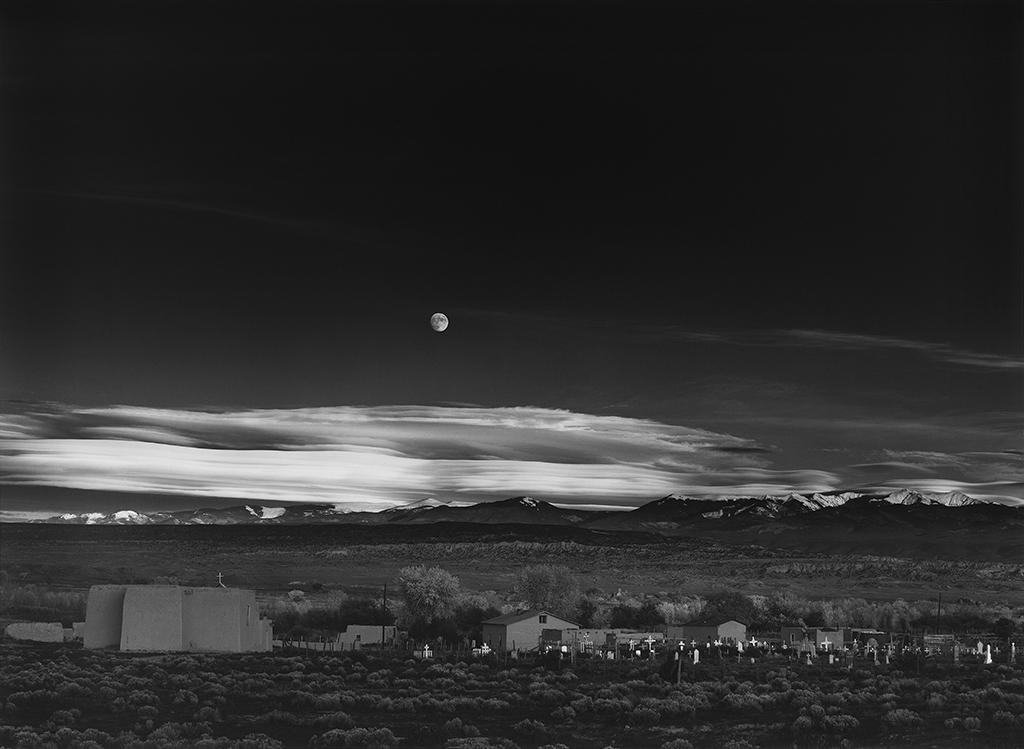
In addition to your work as a curator, you also teach the history of film and you have organized a number of film series for the National Gallery including “The Films of Gordon Parks,” a photographer who donated 227 of his works to the Corcoran, following an exhibition of his work. Now that we have entered the digital age and high quality DVDs are readily available, do you see more still photographers creating narrative film-like presentations and more collectors turning to film and video as collectible?
A couple years ago I saw a multimedia narrative presentation of still and moving images by an artist while judging work for a grant-making organization. It was an amazing packaging of disparate documentary works on a single subject. Unfortunately I have seen nothing like it since. Some individuals are collecting media arts in digital form, though very few have offered such works as gifts to the Corcoran. I’m not sure whether the number has increased dramatically in recent years, though certainly more artists are making work for presentation on DVD, whether in installations or as projected pieces. The collectors I know of who acquire lots of projected media works are the bravest ones, the ones collecting on the cutting edge, the ones least concerned with displaying the object quality of their acquisitions.
The Corcoran Gallery of Art is rooted in Washington DC’s history. As a privately funded museum in 1869, it was founded “for the purpose of encouraging American Genius.” William Wilson Corcoran, the philanthropist whose collection of American Art was the basis of the museum, is reputed to have bought work only from artists with well-established reputations. Today the Corcoran stands in the shadow of much larger government-funded Washington museums. Competition is fierce and photographs from well-established artists have reached the same stratospheric heights as painting and sculpture. Does the Corcoran still adhere to its founder’s dictum of collecting only blue-chip art?
“Blue-chip art” can be interpreted a number of ways: while it seems to generically refer to work of a high quality, it also implies a high prospective investment value, or work by “name” artists, in the sense of “blue chip stocks.” And in that sense we do not acquire only blue chip work, because to do so would violate the very nature of photography, which in my view is a democratic medium. We acquire documentary and vernacular work as well as fine art photography, and we acquire work by younger and lesser-known artists as well as established figures. Both in photography and in contemporary art, collecting means taking risks, and much of the best work in our collection has come because we have tried to remain open-minded and take chances. Having said that, we are currently re-focusing our energies to plug certain gaps in our holdings, and that will mean targeting specific artists and particular works.
We do have many great collections of photography in Washington, some of them vast and encyclopedic in scope, such as those at the Library of Congress, the National Archives and the various museums of the Smithsonian. Because they are here, we do not need to duplicate what they do. And we couldn’t, even if we wanted to. So we try to build our collection and make it better than before.

Considering that photography was in its infancy when William Wilson Corcoran bequeathed his collection to the museum, how did the photographic collection begin at the Corcoran? Was there a major donor who began it with a similar passionate interest in American Photography? According to David Levy, director of Corcoran Gallery for many years prior to resigning in 2005, photography collecting was pioneered by the Museum of Modern Art, the George Eastman House and the Corcoran. Who were those pioneers at the Corcoran?
While the Corcoran is an important part of the story of the institutional recognition of photography as art, we are not pioneers in the sense that MoMA or the Eastman House are. But we did begin accepting photography into the collection in the 19th century, and we began exhibiting photography during the Pictorialist era. William Wilson Corcoran himself is likely the person who brought the first photographs into the collection. But the real “pioneers” of photography at the Corcoran were the people who made the medium an active part of the museum’s program in the late 1960s and into the 1970s and 1980s: Walter Hopps, Jane Livingston and Frances Fralin. They all did groundbreaking work during their respective tenures at the museum.

The Corcoran also is well known for its School of Art and Design (now College of Art + Design) founded in 1890. Is it a common practice for alumni to contribute to the Corcoran’s photography collection?
The collection does include the work of Corcoran alumni and faculty members. From the 1970s on, the museum has been an important force in the local practice of photography, and it was a natural step to reflect that in our collection. We still do so, though we are particularly cognizant of the potential for conflicts of interest. But to give a recent example, last year we acquired works by Joyce Tenneson that were made during the early 1980s when she worked in Washington.
The Corcoran appears to be undergoing a major shift in direction since 2006 when Paul Greenhalgh was appointed as director and president of the Corcoran. The long touted new addition by architect Frank Gehry has been sidelined, exhibition schedules have been dramatically altered, and there is talk of a return to generating exhibitions from the Corcoran curatorial staff rather than relying on exhibitions organized by other institutions. However, the current exhibitions Ansel Adams and Annie Leibovitz: A Photographer’s Life, 1990–2005, both through January 2008, were both organized by other museums. What plans does your department have for fulfilling this new directive?
The Corcoran has and will continue to host interesting traveling exhibitions, just as we organize our own exhibitions and send them out on the road. Both Ansel Adams and Annie Leibovitz: A Photographer’s Life, 1990–2005 are examples of shows organized elsewhere that we thought our audiences would want to see. But we’ve been making our own major exhibitions all along and will continue to do so. Under Paul Greenhalgh’s leadership we are changing the way we make major exhibitions, but I don’t think we are planning to ignore other museum’s exhibitions. We are still always looking to see what is out there that fits well with our program, and we are well aware that we can’t organize every type of show our audience wants to see.
We are planning several major exhibitions that involve photography. Right now I am organizing Richard Avedon: Portraits of Power, a survey of Avedon’s portraiture that deals with politics and power. The work included spans his career and the show will be timed to the American presidential election season, opening just after the conventions in Fall 2008 and running through the end of the inaugural in January 2009. Philip Brookman, who is now our Director of Curatorial Affairs, is organizing an Eadweard Muybridge retrospective for 2010. And a team of our curators is working on a sweeping survey of Postmodernism for 2011, which will include many photography and new media works.
Where will you turn to for these new curatorial initiatives? What feeds your curatorial imagination?
I’m really interested in the intersection between photography and politics, and in the ways that photographers use the medium to reflect the social world. I’m not sure if I developed this interest from being in Washington, or if I came here because this was the perfect place to view the medium through this filter. Working on the Robert Frank archive at the National Gallery, in a building near the U.S. Capitol, was certainly an influence. Seeing how artists think when installing their work in the Corcoran, which is a few hundred feet from the White House, has been an ongoing revelation. Context is so important: we always think about how images reflect the country — and its people, its promise and problems — when considering our exhibitions.
You are a photographer as well as a curator. Your work was included in the Crosscurrents series at the University of Maryland in the 2004 “Room Full of Mirrors.” The 14 artists in the exhibit were described as ‘using the collage aesthetic; incorporating various methods using chance and accident to allow creativity to work through them not from them.’ You have also been involved in a grass roots organization of Washington area artists WPA\C that until recently was part of the Corcoran Museum. You have juried exhibits for many organizations. Clearly, you have a pulse on the kind of work being generated by contemporary and as yet unheralded photographers. What trends do you see there?
Well, interestingly, I don’t feel all that “in touch” right now! I’ve been buried under the work I’m doing on the big shows we have scheduled. But when I do have time to look at new work, I’m really interested in how photographers are evolving their representation of capitalism and its discontents. Gursky’s rational re-orderings of the middle class world of consumption and power are giving way to more explicitly political visions like Chris Jordan. I’m also seeing more work I like that seems suffused with a blanket of anxiety, like that of Amy Stein, Noelle Ta, and Kate MacDonnell, all of whom have roots here in D.C. And I am interested in the ongoing return to earlier photographic processes in the face of the medium’s eclipse at the dawn of digital.
You were also part of a panel discussion, “The Artist’s Responsibility in a Political Environment” that reflected on the role of the artist as a political pundit and activist. Documentary photography has a long established place in political activism but what about the new photography where lines are blurred between the real and the created?
Well, that’s an interesting question. I have to say that I think most fictional, performative and theatrical work is really boring. It is, I think, the most overrated avenue of photography I can think of. Most of the work I see shows just how hard it is to make a single image out of set design and stage direction — usually the work people praise is incredibly awkward, emotionally empty and totally unrevealing. I am kind of fascinated by own negative response, though, and I want to investigate this work more so I can see why I reject so much of the work I see. I recently got Lori Pauli’s exhibition catalog from her show at the National Gallery of Canada, Acting The Part (Merrell, 2006) so I can learn more about it. Maybe it will temper my attitude.
The Corcoran’s Director Paul Greenhalgh was quoted in a Washington Times interview as saying: “This institution should be a think tank. We’re not in the business of pleasing people; we should also challenge and educate.” With that in mind: what would be your ideal exhibition?
My ideal exhibition is a survey of the medium through the notion of the uncanny, first defined by Freud as the state where something is both familiar and foreign at the same time, resulting in profound discomfort and anxiety. This show would look at photography’s history as a vehicle for exploring what lies beneath the visible: the uncomfortable truth below the pleasing, understood and well-ordered surface. My favorite photographs are the ones that destabilize our consciousness rather than confirm what we think we know.
Any plans for that in the future?
Well, fortunately yes! That show is tentatively scheduled at the Corcoran for 2011–12. If all goes well it will be the next big show I work on after Richard Avedon: Portraits of Power.
The Corcoran Gallery of Art is located at New York Avenue and 17th Street, NW, Washington, DC. Please see the Gallery’s website for hours and admission fees.
Curator Interviews
San Francisco Museum of Modern Art Photography Curator Sandra Phillips
Published
1 year agoon
December 25, 2021By
Kay Kenny
Sandra Phillips is Senior Curator of Photography at the San Francisco Museum of Modern Art, an institution that has dynamically supported and collected photography since its opening in 1935. Phillips received a B.A. in art and art history from Bard College in 1967 and an M.A. from Bryn Mawr College in 1969. She earned a Ph.D. in art history in 1985 from City University of New York, where she specialized in the history of photography and American and European art from 1849 to 1940. Phillips has written and lectured widely on photography and is the author or co-author of several books and catalogues. Her recent exhibitions include: “John Szarkowski: Photographs”; “Diane Arbus Revelation”; “Police Pictures: The Photograph as Evidence”; and “Shomei Tomatsu: Skin of a Nation.” Despite the globalization of media and the arts, regional differences are a curious reminder that a sense of place still informs our imagery. Sandra Phillips has an unusual vantage point having grown up with the New York’s MoMA and overseeing the photography collection at SFMOMA.
All of your university degrees, including your Ph.D. from the City of New York, are in art and art history where you specialized in the history of photography along with American and European art from 1849 to 1940. Did you have a primary mentor for the study of photography’s history at that time?
No, but I grew up in New York and loved museums, and I consider myself a student of the work shown at the MoMA. In fact, I remember seeing the show, “New Documents.” I remember seeing the Arbus pictures because I went with a friend, and she thought it would be fun to go. I remember seeing a man spit at some of the pictures in the show.
When did you gravitate towards photography as a field of study?
I come from a family of art people -my dad was an architect, my mom a landscape architect, and I thought I would be a painter, so when I went to school, that’s what I studied. But I became more interested in looking at art, and it seemed really interesting that no one was then taking the history of modern American art really seriously -this was in the 60s. And then when I got more involved in modern American art, it seemed that one of the major contributions was in photography, which was even less studied, and that intrigued me even more.
Under the direction of curator John Humphrey, SFMOMA was one of the first museums to recognize photography as an art form, over 70 years ago. Can you tell us what initiated that recognition and began the process of creating the SFMOMA’s photography collection in 1935, the same year that it opened? Was there a special collection donated to the museum at that time?
The San Francisco Museum of Art, as it was then called, was founded by a group of wealthy local individuals. You realize that San Francisco became a city very suddenly when gold was discovered, so everyone in the world was interested in San Francisco, and the 49ers were here and many of them used the services of the daguerreotypists to send records of their recent fortunes back home. There has been a very strong interest in photography here since the 19th century–remember Carleton Watkins, Muybridge, and others used this as their base. There has never been a tradition of important art created here -that is relatively new, but when the museum was founded in the 30s there was an impressive range of important photographers he could own or lease. This might include tents, caves, pictures made within buildings, etc. He is still an active collector, and I tease him that we’re planning the Return of the Paul and Prentice Sack Collection.
SFMOMA recently received another significant donation from the Emil & Silverstein Collection. What distinguishes this collection from the Sack collection?
This is a very different collection. I would describe the pictures as psychologically informed. It is historical, but the emphasis is on work of surrealist inflection produced in the 1930s and the present. The pictures are also in their own way very personally meaningful to their owners, in a very different way from
the work in the Sack collection.
SFMOMA prides itself as having from the first, viewed photography as a modernist art form. Its collection of over 15,000 prints is known for it’s early American and European modernist photographers as well as Western American Landscape photography. How does modernist photography differ from contemporary photography? Would you define photography in the same terms today as in the days of your predecessor, Van Deren Coke, who established the department of photography in 1980?
I would define modernist photography as photographs which aspire to modern art, and which were made by Americans and Europeans in the 1920s and 30s, essentially. Since I came to the museum, in 1987, I have enlarged the scope to include 19th century and have emphasized our tradition of landscape representation. Coke thought about photography in terms of modernist art -I believe the concerns of contemporary photographers are related but different.
In 1980 the exhibit “California Photography 1945-1980” examined the aesthetic and history of photographic image-making unique to California. Do you think there remains a special sensibility that divides West Coast from East Coast photography?
First, I had nothing to do with the California show, but yes, I would generally say that in the west there is an abiding interest in land use and land issues, which is not generally shared by photographers or audiences for photography in the east.
In California today, what influences define West Coast photography?
There is more of an understanding of Asia here.
Before coming to SFMOMA in 1987, you were the curator at Vassar Art Gallery in Poughkeepsie, New York. Did your experience at Vassar provide you with a heightened sensitivity to women photographers?
Not really, I was there for about a year. But in general, photography has provided women with opportunities not so obvious or available in other fields.
You have organized exhibits and written numerous essays on women photographers, most notable Dorothea Lange in 1994 and Helen Levitt in 1991. Your essay “Women Artists in California & Their Engagement in photography” appeared in the book Art/Women/California 1950-2000. What special concerns faced women photographers in the past, and do you believe that many of those photographers may still be undervalued?
If you mean monetarily undervalued, I suppose you could say that, but this is an aspect of the field that really doesn’t interest me too much. The “concerns” that women faced in the past are ones they -we -face today. If we are mothers who need to work, how do we do this? That is probably the most obvious difference.
There is an interesting story about one of Dorothea Lange’s most famous photos, a migrant farm worker named Florence Thompson. As Lange’s photo gained wider recognition and value, Florence and her children came forward, angry that neither monetary compensation nor a copy of the photo were ever given to them. You recently organized the Diane Arbus exhibit, another controversial photographer often accused of exploiting her subjects. How do you address this issue when the subject comes up?
Well Lange worked for the government, she had a job, and her photographs were made to serve a purpose, one that she very much believed in; then the times changed. I do not think she would have said she was exploiting her subjects. And frankly I don’t feel comfortable with the idea that Arbus “exploited” her subjects either, they look very interested in her, as much as she in them. When she was making these images, they were very new, very raw material. I don’t think you would see anyone today spitting on her photograph of a young man in curlers, as I saw in the MoMA exhibit “New Documents.” I think we’ve become more tolerant, as a culture.
Documentary photographers, such as Dorothea Lange, never anticipated their work on a museum or gallery wall. Their photographs told a story meant for the printed page of national magazines. It seems that today’s documentary photographers anticipate a museum or gallery exhibit along with a well-designed coffee table book. Do you think that the nature of documentary photography has changed to appeal to a more limited audience?
Photography has changed technologically, and the ambition of certain photographers has changed, I think that is the way I would put it. Someone wise once said that the process gets easier but the number of important photographs remains the same. There is a lot of indifferent work being made, but some very interesting work as well.
Many of the snapshots of today, along with the news photos of our time, are in digital form. It is very likely that no “paper trail” will exist in the future for these kinds of images. The history of fine art photography is filled with images that were never intended to be considered fine art. Is this concept lost forever to future collectors and curators?
If so, maybe that is not such a bad option -look at all the bad stuff out there, and consider all the time needed to sort out the good from the dull.
You’ve spent a good deal of research time at the Vatican Photography Collection and recently received a Getty fellowship to return to Rome and continue your research. What special fascination does
this collection hold for you?
It’s mainly unknown work by unknown photographers from all over the world.
With John Szarkowski, you organized a major retrospective on Ansel Adams, in 2001, then curated a major retrospective of Szarkowski’s photographs that recently traveled to the NY MoMA. What’s next for SFMOMA? Any future plans for another major retrospective such as one on Van Deren Coke?
My next big project will be on voyeurism and surveillance. I’m working on a big exhibit about things that are forbidden to be photographed: like violence and death and sexual images. It is also about how we are watched and our ambivalence about photography. It is about a culture that is ferociously looking at images that are taboo.
SFMOMA is located at 151 Third Street (between Mission and Howard Streets) San Francisco, California. For general information call (415) 357-4000 or visit www.sfmoma.org.
Kay Kenny is a photographer, writer, and teaches photography at ICP, NYU and SHU, web: www.kaykenny.com, e-mail:kkennys[email protected]
Curator Interviews
Malcolm Daniel: Metropolitan Museum of Art
Published
1 year agoon
December 21, 2021By
Kay Kenny
During a weekday afternoon at the Metropolitan Museum of Art a few tourists straggle in and a woman with a traveling easel and unfinished copy of an 18th-century portrait passes by. Two educators compare their students’ drawings from the Pre-Columbian section. When we meet, Malcolm Daniel, newly appointed Curator in Charge of the relatively new Department of Photography, breaks into a smile. He assures me that while photography has only recently gained a department and curator of its own within this museum’s vast encyclopedic collection, it’s been around much longer.
Photography departments in university art schools were just beginning when you received your B.A. in Art History & Studio Art from Trinity College in Hartford, Connecticut in 1978. Did your art history studies include the history of photography?
No, there wasn’t a history of photography program offered at the time. There is one now. At the time I was studying printmaking and painting. I had visions of being an artist and I was studying the range of art history from ancient to modern. I had a mild interest in photography.
In a way, the most important aspect of my education, one that shaped the career I would follow, was a semester spent in Rome where I had inspiring teachers and the experience of going into the city and studying art history by standing in front of the actual art object and architecture. It was that experience of contact with the real works of art and what you could learn from that contact, that confirmed an interest I already had of working in a museum. It was also true that the more great art I saw, the more humble I felt about my own range in the art world, so I became more and more confirmed as an art historian. I do think that as an art historian I’ve been helped by having had that experience of trying to make art myself. I have a better understanding of how those physical processes work as a result of my printmaking experiences.
Peter Bunnell was a leading force in the development of a History of Photography Program at Princeton University where you received your M.A. and PhD in 1987 and 1991. How did he shape your interest in photography?
That’s really where my interest in photo history blossomed. Before going to graduate school I worked in the education department at the Baltimore Museum -bout five years. While I was there I developed a deeper interest in the graphic arts in 19th-century France and in photography.
At Princeton, having the opportunity to work with primary material in the Minor White Archive, and Peter’s dedication to teaching history with the actual object – it was his instruction, his enthusiasm and his passion that ultimately led me into photographic history. I didn’t go to Princeton to study photo history! I went thinking I would do something in modern painting or sculpture then gravitated towards 19th-century France. I decided, however, to do something that excited me a lot: Work where I could make a contribution. That was the work I had done with Peter in an area of photography where there was still so much primary research to be done.

You were still working on your doctorate in 1990 when you joined the Metropolitan Museum as a curatorial assistant. That must have been an exciting time to be there just as Maria Morris Hambourg began working with Howard Gilman and Pierre Apraxine to shape the Gilman Paper Company’s Photography collection as a compliment to the museum. What was your role as her assistant with this enormously important collection?
Actually, I had been a fellow in 1987 and 1988 in what was then the department of Prints and Photographs and worked with Maria Hambourg at the beginning stages of my dissertation. We got to know each other. I then went off and did a year of research in the archives in Paris. I was writing my dissertation in 1989, 1990 when a position opened up and she held the job open for six months for me so that I could finish the dissertation before starting work. She knew we would work well together.
It was a very exciting moment in the department. We were on the verge of becoming an independent curatorial department. Certainly the great attraction of coming to the Met was the opportunity to work with Maria, whom I admired so much, still admire so much, and from whom I have learned so much, as well as the chance to work with a great collection in an encyclopedic museum. From the moment Maria came to the Met, in late 1985, early 1986, the relationship with the Gilman collection began to build. By 1990, they were already envisioning the exhibition “The Waking Dream” and that collaboration intensified. I’ve always worked with the whole collection but my heart has always been with the 19th century. It’s the period I feel the most passionate about and done the most research in, but the history of photography is relatively short and in this department we all contribute to the discussion about works from the whole history. Each of us have a special area, an area that we love more than others, but we all feel comfortable participating in discussion – that’s what makes it so exciting.
Your area of expertise is described as 19th-century French and British photography. Was it the Gilman collection that brought you to the museum or did you see the Metropolitan Museum’s on-going interest in early photography as a perfect compliment to your own interests? I’m referring to Alfred Stieglitz’s collection of turn-of-the century photographs and the photographs from the Ford Motor Company Collection.
Well, it’s not accidental that Maria Hombourg had a deep interest in 19th-century French photography, which was the area that my dissertation was in, the French landscape and architectural photographer Edouard Baldus. It was an area that she was interested in building within the collection. Part of that was the Gilman Collection, but we also made major acquisitions for the collection in 19th-century French photography since the moment Maria arrived. By the time I got here, the collection had two great strengths, the Stieglitz Collection, which had come in as a gift from Stieglitz in 1933, and the Ford Motor Company Collection acquired in 1987.
The Stieglitz Collection included some of the greatest works by Pictorialist photographers and members of the Photo Succession so we had incomparable strength from the period of 1895 to 1915. The Ford Collection assembled by John Waddell, a great New York collector, is a collection of 500 American and European photographs of an era between the two world wars. That extended our collection up to World War II. Maria’s task was to strengthen what came before the Steiglitz Collection and what came after the Ford Collection.
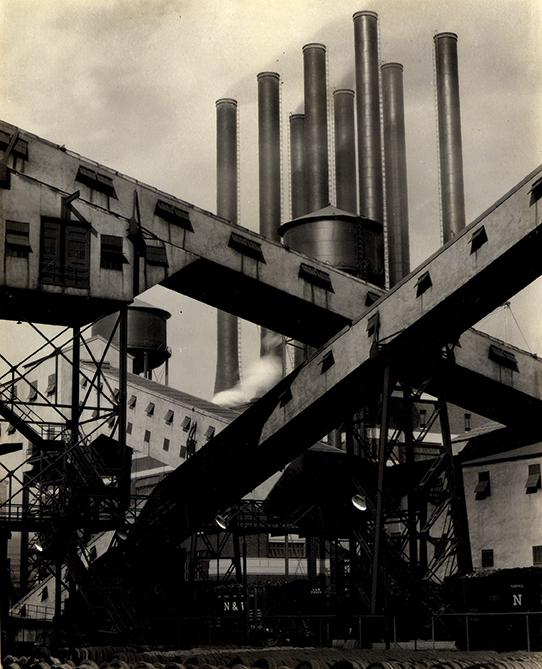
You have also been instrumental in acquiring work from the Rubel Collection and curated an exhibit in 1999, “Inventing a New Art: Early Photographs from the Rubel Collection.” How did that come about?
We had various opportunities throughout the 1990’s to acquire French photographs that trickled out from people’s cupboards and came through auctions and dealers and were pretty successful. We weren’t as successful with the British material. Part of that had to do with the market. In the late 1970’s and early 1980’s there was a great rush of British material to the auction houses as the photography auctions began in the 1970’s in London. Libraries and manor houses emptied out into those auctions as people discovered that there might be value in those old photographs, but the museum did not buy anything during those years! The study of the history of photography wasn’t developed enough yet. There weren’t the books, the tools, there wasn’t yet a connoisseurship, a sense of what the print should look like.
So, after the rush of materials to the auction houses, it all dried up. The William Rubel Collection gave us a second chance. He assembled the collection in the late 1970’s, early ’80’s when maybe only half-a-dozen people were seriously collecting. Rubel put together a very remarkable collection with enormous strength in British photography, particularly those four pillars of 19th-century British photography, Talbot, Hill and Adamson, Roger Fenton and Julia Margaret Cameron.
You founded the Alfred Stieglitz Society about seven years ago. Is this a special interest group dedicated to early photography?
We’ve always had a visiting committee, which is a kind of advisory committee for the department. It’s made up of prominent collectors and a couple of people from academia including Peter Bunnell and Eugenia Parry. She was the person who wrote the book “The Art of French Calotype” but we wanted a way to expand our circle of friends and supporters so we founded this friends group for photography from the past right up to the present. It developed into this very lively and supportive group of about fifty individuals or couples, most of them collectors. The members are by invitation, but we do welcome queries and the members do spread the word. Our one restriction is that it is not open to dealers or people involved in the trade. Members pay dues each year. There are events throughout the year that include visits to artist studios and to private collections, tours of our exhibitions and curatorial seminars working with the Met collections. We balance our program with 19th century, vintage 20th century to contemporary photography. For instance, this year Jeff Wall spoke to us at our first event of the year. We just made a major acquisition of Wall’s work. The main event is a dinner each spring in which the curators present works of art -cquisition and the members vote on what their dues money is to be spent on. Of course, all of the work we present is work that we want and most times we’ve been very fortunate and individual members have stepped up and said, ”If the group doesn’t vote for this, I’ll contribute the funds!” Usually we’ve been able to acquire almost everything we’ve presented.
You were appointed an assistant curator in 1993, the same year that “The Waking Dream: Photography’s First Century,” a huge exhibit of photography from the Gilman Collection, was exhibited. The Department of Photography was only created in 1992. What took so long for the Museum to formally recognize a department of photography?
Well, this museum collected photography before MOMA was founded. It’s important to us now that we are a separate department, but the Met began collecting photography in 1928. It was in the purview of the Prints department but we had quite visionary curators. The first curator of the Print Department was William Ivins followed by Hyatt Mayor. Both of them had an all-encompassing sense of what constituted the graphic arts. In the fifties John Mckendry was at the helm. He had connections to the fashion world and brought in a little more contemporary photography. When Weston Naef came in first as a college intern. then as assistant curator, he took photography as his bailiwick and focused on building the collection further. So there was a sustained interest but no pressing need to make it a separate department.
When Maria came in 1985 she was the first curator specifically hired as a photography curator and the first to have done her doctorate with a focus on a photographer. She came in as an associate curator prepared to lead such a department. It took a little time to establish it. She came in and built the collection through the Ford Motor Collection acquisition and made her mark through various exhibitions. The director and the trustees saw what she was doing and understood that photography had its own history. I think that it’s more remarkable that this museum has been collecting photography for eighty years than that it didn’t have a department of photography until 1992.
By the time you assumed the post of Curator in Charge, in 2004, the museum had already started to vigorously collect more contemporary photography. It seems as if the museum was trying to rapidly make up for lost time. Do you see a major shift in that direction at this point?
I think that’s true. We have always collected right up to the present day but as long as Maria’s been here and I’ve been here we have exhibited contemporary photographers. But I do think, with the acquisition of the Gilman Collection giving us such great strength in the first hundred years of photography and setting so high a standard in terms of image and print quality, that there would be fewer and fewer acquisitions of 19th-century and vintage work needed to fill the gap in our collection. Our acquisitions will be focused on the period from 1960 to the present and, of course, new work is being made every day!
Your curatorial interests, on the other hand, seem to remain largely in the 19th and 20th century. You curated the exhibits “Edgar Degas, Photographer” in 1999, “The Dawn of Photography: French Daguerreotypes” in 2003 to ‘04, and most recently “All the Mighty World: The Photographs of Roger Fenton, 1852–1860” in 2005. Do you see your interests changing with the museum’s growing interest in contemporary photography or is this an area that is dearest to your heart and likely to remain so?
Yes, my heart remains in the 19th century, there’s no question! I find it a remarkable moment particularly in the 1850’s when photography was fully mature and taken up by trained artists and yet it was still a hand-crafted medium. It hadn’t yet been industrialized. There were such glorious pictures being made by French and British photographers and American photographers.
Who, among your staff, advises you on contemporary photography? What kind of work or trends are they bringing to your attention?
There are two people. The first is Douglas Eklund; he’s an assistant curator whose area of specialty is 1950 to the present. He’s working on a show called “The Pictures Generation: Cindy Sherman, Richard Prince, and Laurie Simmons.” Louise Lawler is currently scheduled for 2009. It should be a great show! He’s the staff member who is most frequently out in the galleries, meeting with artists, meeting with dealers and collectors.
However, we also go out as a department once a month and Doug has usually gone out and done the scouting around and figured out what is most important for us to see as a group. The second person is Maria Hambourg, who after several years of being on leave has returned part time. After doing so much in the 19th century and early 20th century, what she’s finding most exciting is the contemporary world and she’s working closely with Doug in that area.
Now that the Gilman Paper Collection is officially part of the museum’s holdings, would you say that the Met has become the preemptive power in world-class photography collections? Any rivals to this collection of over 8,500 images?
Yes, there are rivals, but I think it places us in the highest rank. It’s very hard to compare collections. In terms of the 19th century our only rival is the Getty Museum. If you compare us to MOMA, certainly MOMA is stronger in classic 20th-century photography. If you compare us to the Museum D’Orsay, yes they have a stronger French 19th-century collection. If you look at the National Museum of Photography, Film and Television in Bradford, England, with their acquisition of the Royal Photographic Society collection, they have great strength in turn-of-the-century material like the Stieglitz collection. They have the second highest concentration of Pictorialist photography in the world and they have an unrivaled collection of 19th-century British photographers.
You participated in a panel discussion recently at the Met in conjunction with AIPAD. The panel’s theme was “Collaboration: Collector & Curator” and you shared the stage with Pierre Apraxine of the Gilman Paper Company Collection, as well as several other museum curator and collectors. Are you still working with Mr. Apraxine to acquire new works?
In an informal way. Pierre has a suburb eye and experience, so we ask his opinion about work few are considering -cquisition, or ideas for exhibitions. The next installation to open in the Gilman Gallery in February titled “Sight Unseen” is from the Gilman collection—photographs that have never been shown in the Met before. Pierre worked with associate curator Jeff Rosenheim to choose the work for the exhibit. We rely on Pierre for the history of that collection. He knows more about those pictures than anybody else. He was the curator for the recent exhibition “Spirit Photographs.”
While the Howard Gilman Gallery is a wonderful showcase for earlier photography it can’t accommodate the large-scale images of many contemporary photographers. Any plans to create a permanent gallery for this work? Do you foresee any future trends that indicate another great shift in the photographic horizons?
Yes, though the details can’t really be announced yet, funds have been donated and plans are very much alive – gallery of contemporary photography that would be appropriate in scale and space to view photography of our own time. Our notion of what constitutes a photograph is expanding so we will continue, carefully, and slowly, to acquire works of video and new media that seem to mesh with our interests in photography. It may be that the modern art department also collects in that area and we hope there will be communication and collaboration. After all, we are all one museum and I wouldn’t want to see the history of photography divorced from the contemporary expressions of that medium!
The Metropolitan Museum of Art is located at 1000 Fifth Avenue at 82nd Street, New York, NY. For general information call: 212.535.7710 or visit
www.metmuseum.org.
Trending
-
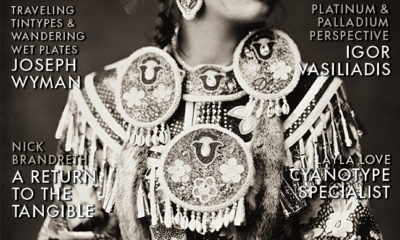
 Gallery Focus2 months ago
Gallery Focus2 months agoNew: Focus Magazine Returns To Print
-

 Gallery Focus1 month ago
Gallery Focus1 month agoPreserving the Past, Capturing the Present: The Journey of Three Traveling Tintype Photographers
-
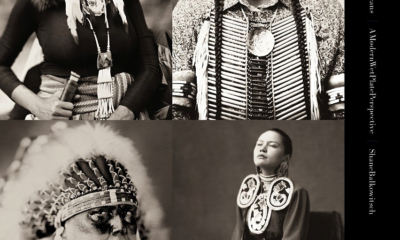
 Gallery Focus2 months ago
Gallery Focus2 months agoNorthern Plains Native Americans: A Modern Wet Plate Perspective (Volume 2)
-

 Collector's Focus1 month ago
Collector's Focus1 month agoFine Art Photography and the Human Condition: A Study of the Emotional and Psychological Themes in Contemporary Photography
-

 Gallery Focus1 month ago
Gallery Focus1 month agoExploring the Impact of Artificial Intelligence on Photography: New Possibilities and Challenges
-
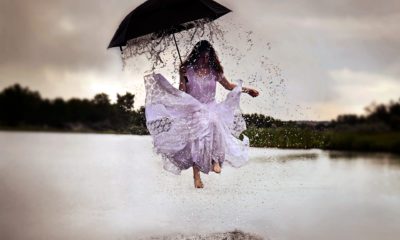
 Gallery Focus1 month ago
Gallery Focus1 month agoState of the Arts: The Market For Fine Art Photography
-
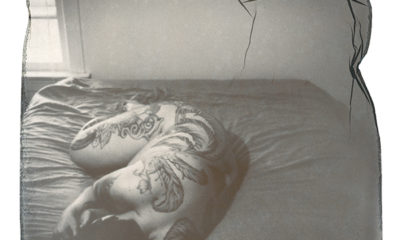
 Gallery Focus1 month ago
Gallery Focus1 month agoUnleashing Creativity with the Art of Polaroid SX-70 Emulsion Lifting
-

 Gallery Focus1 month ago
Gallery Focus1 month agoPainted Smiles and Hidden Tears: A Photographer’s Journey into the World of Circus Clowns


